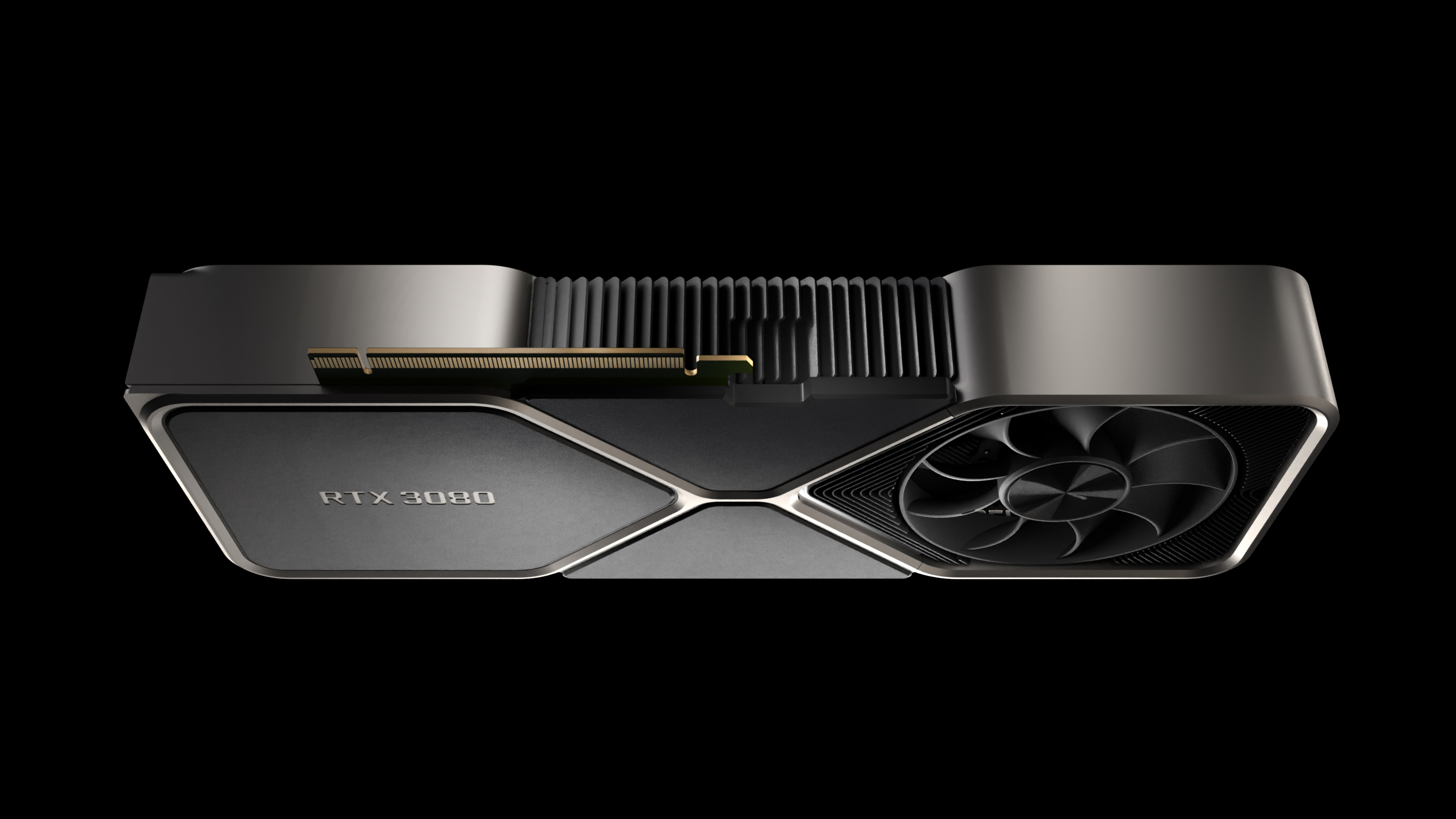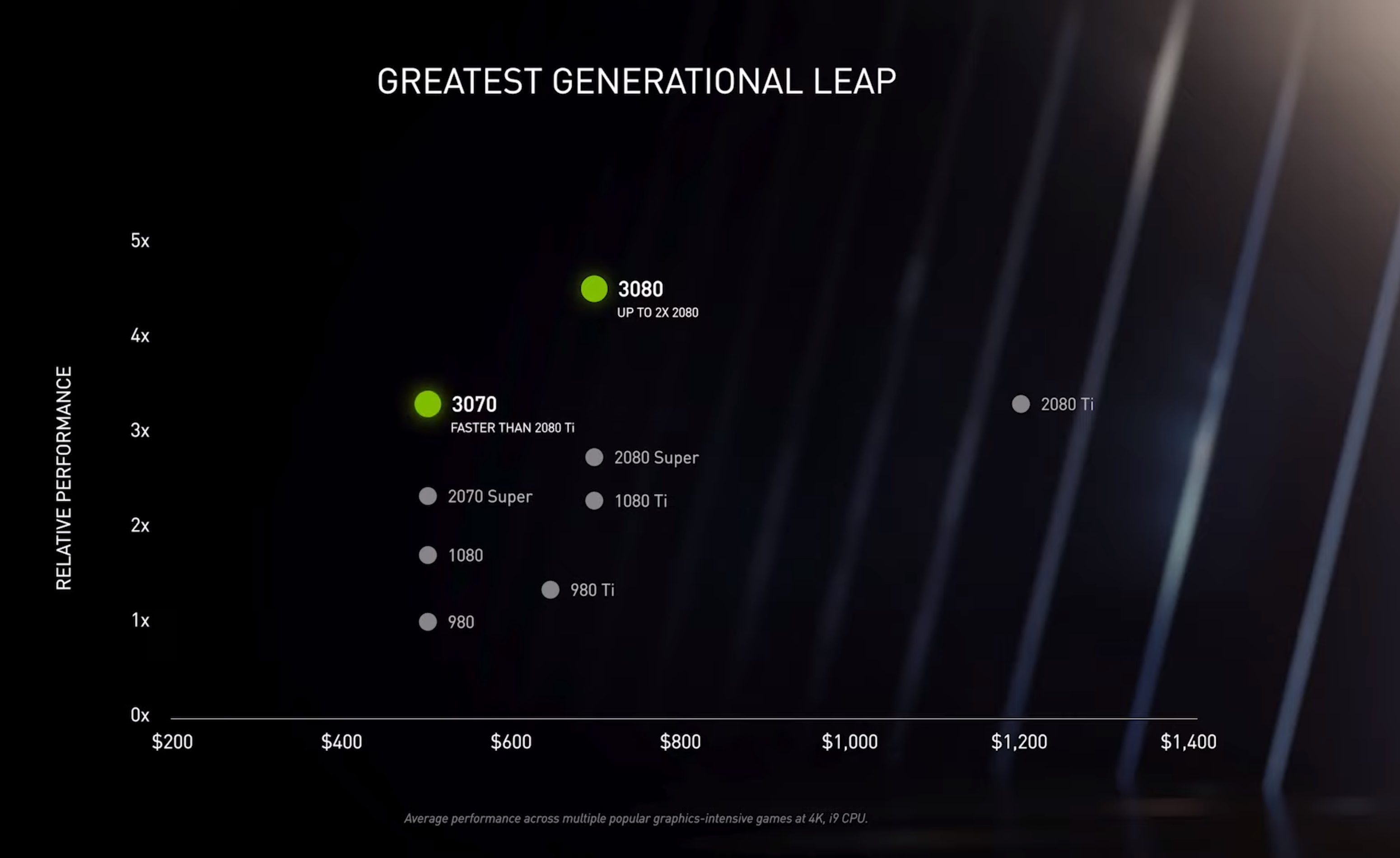Nvidia Ampere's new flagship RTX 3080 costs just $699, launches September 17
Nvidia realigns its cards to make the RTX 3080 the next king of gaming.

And there you have it. We now know the official specifications of Nvidia's second-gen RTX architecture. And in a somewhat surprising move not only did we get pricing information at the same time, but Nvidia has made it a fundamental tenet of its new lineup. So much so in fact that it has promoted the RTX 3080 to be the flagship offering—it may not be the fastest card in the line-up, but it's the one Nvidia is trying to focus gamers' attention on.
The Nvidia GeForce 3070 at $499 is an upper-mainstream contender, while the range is topped out by the RTX 3090 at an eye-watering $1,499. It's the top-end card, sure, but it's not going to have the impact that the 2080 Ti had, at least it shouldn't. But it's an option if you simply have to have the best.
Back to the RTX 3080, and what does that $699 get you?
According to Nvidia's own performance figures, you're looking at twice the performance of the RTX 2080 and a significant lead over its own $1,200 RTX 2080 Ti, but for $500 less. That's not a bad deal in anyone's books. Of course we'll have to see if that performance measures up in the real world, but I certainly applaud a return to vaguely normal pricing.
Just in case you'd forgotten, the mighty GTX 1080 Ti also launched at $699, and while still a fair amount of cash, it seems like a decent amount to charge for a flagship offering.
If your budget can't quite extend to that, then the RTX 3070 at $499 should come as welcome news. Doubly so when the same performance chart has the RTX 3070 hovering at the same level as the RTX 2080 Ti, with the glorious words underneath it—'FASTER THAN 2080 Ti'.

Which is incredible if true, but once again let's wait until we've got the 3070 in the labs before you rush out and buy one.
The biggest gaming news, reviews and hardware deals
Keep up to date with the most important stories and the best deals, as picked by the PC Gamer team.
In some respects the rumours on pricing weren't too far off the mark, but what they didn't allow for was the shift in focus. That RTX 3090 at $1,499 is clearly too rich for many, and Nvidia has recognised this and almost pushed it to the sidelines. It's there for those that need the fastest card around, but it's not a mainstream consideration.
| Graphics Card Name | RTX 3090 | RTX 3080 | RTX 3070 |
|---|---|---|---|
| GPU Name | Ampere GA102-300 | Ampere GA102-200 | Ampere GA104-300 |
| Process Node | Samsung 8N | Samsung 8N | Samsung 8N |
| CUDA Cores | 10496 | 8704 | 5888 |
| Boost Clock | 1700 MHz | 1710 MHz | 1730 MHz |
| Memory Capacity | 24 GB GDDR6X | 10 GB GDDR6X | 8 GB GDDR6 |
| Memory Bus | 384-bit | 320-bit | 256-bit |
| Bandwidth | 936 GB/s | 760 GB/s | 512 GB/s |
| Memory Speed | 19.5 Gbps | 19 Gbps | 16 Gbps |
| TDP | 350W | 320W | 220W |
| Price | $1,499 | $699 | $499 |
| Release date | September 24 | September 17 | October |
This pricing could also suggest something about what AMD has lined up. We've been saying this for a while now, but how much Nvidia thinks it can charge for its new graphics cards says a lot not just about how it values its own technology, but also where it thinks it stands in relation to AMD RDNA 2. The pricing across the range suggests that Nvidia's dominance of the graphics card market could be about to shift.
To a certain degree Nvidia could have charged what it wanted for its Turing GPUs, because there was nothing else in the industry that could compete (not just in terms of performance but also when it comes to the feature set). Ampere doesn't have quite so easy a ride—not only is it competing with Turing, but AMD's RDNA 2 will be joining the real time ray tracing rodeo, as will Intel's Xe (although not until 2021).
So ignoring the top of the stack a moment, where the fastest hardware can pretty much charge what it likes, the RTX 3080 priced at $699 could indicate that Nvidia respects what AMD has done with RDNA 2. We'll have to wait and see how that lines up, but being first out of the gate with 'reasonable' pricing looks like it is going to serve Nvidia well.
Alan has been writing about PC tech since before 3D graphics cards existed, and still vividly recalls having to fight with MS-DOS just to get games to load. He fondly remembers the killer combo of a Matrox Millenium and 3dfx Voodoo, and seeing Lara Croft in 3D for the first time. He's very glad hardware has advanced as much as it has though, and is particularly happy when putting the latest M.2 NVMe SSDs, AMD processors, and laptops through their paces. He has a long-lasting Magic: The Gathering obsession but limits this to MTG Arena these days.


